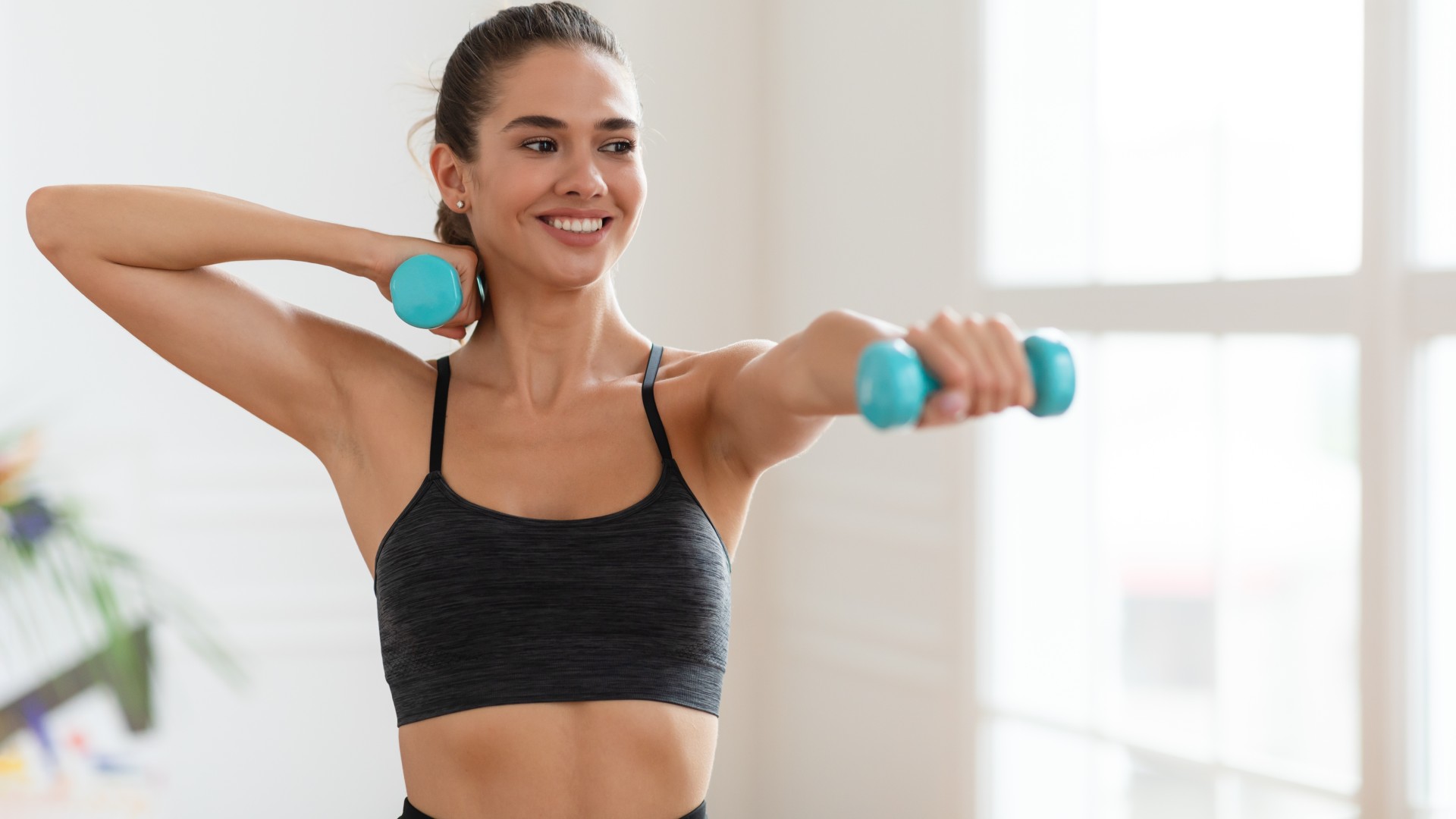
I’ve become a total Pilates convert recently, and my enthusiasm has been further enhanced by discovering this 30-minute ‘Power Pilates’ workout with weights.
You only need a set of the best adjustable dumbbells, or one set of light to medium weights, and 30 minutes. I also recommend a yoga mat or exercise mat, as some of the exercises will be completed lying down on your back.
Get ready to feel the burn and boost your endurance, as the workout by Marie Steffen will test your ability to perform high reps under load while maintaining controlled form. The results? Better stability, muscular endurance, coordination, and control. Here’s the workout for you to try yourself.
Watch Marie Steffen’s 30-minute ‘Power Pilates’ dumbbell workout:
The Pilates strength workout works best with either adjustable dumbbells or a few sets of weights for different exercises. Steffen recommends 1.5 to 3kg per weight, but that depends on your strength levels and your ability to maintain the same weight across many reps.
The muscles worked during this session include your legs, glutes, core, shoulders, chest, triceps, and biceps, which means you benefit from a full-body workout in the time it takes some people to get to the gym.
The routine starts with a warm-up, using mobility exercises to work your muscles and joints through a full range of motion before you lift any weights. Steffen wears ankle weights throughout the whole 30 minutes, including the warm-up, but these are optional.

The key to getting the most out of this workout is to move slowly and with control rather than rushing your reps. Pilates famously builds exercises, often starting with one type of exercise and then adding to it, which means you accumulate lots of reps and enter into the type of pain cave that makes you want to shout obscenities at your instructor.
Get instant access to breaking news, the hottest reviews, great deals and helpful tips.
This combining of several exercises means you slowly increase intensity, so be sensible with your weight choices, which is a mistake I have often made and will probably make time and time again.
The first 30 to 45 seconds might feel easy, but as you begin to build onto the movements, even a set of 2-3kg weights can begin to feel like 50kg, so even if it feels "easy" to start with, hold off on switching out your weights until you’ve spent longer on the moves and know what’s coming next.
This is especially true for arm exercises like lateral or frontal raises and holds, as the arms and shoulders tire much quicker than the larger, more powerful muscles in your legs and back.
During the standing sequence, Steffen adds upper-body exercises, like overhead presses or arm raises, to single-sided leg movements like lunges. That means you’re doubling up on the upper body work because you have two sides to complete — left and right leg. This is another reason to be mindful of your weight choices.
You accumulate lots of reps and enter into the type of pain cave that makes you want to shout obscenities at your instructor.
The routine is really well-rounded and hits all the major muscle groups in your legs, back, chest, and arms, plus there’s the bonus of core and abs work. There is minimal time to rest between exercises, which improves your muscular endurance, and Steffen provides a few tips and cues to follow at the start of every exercise. I recommend keeping a close eye on your screen for these, as there’s minimal interaction throughout otherwise.
Finally, you’ll finish the session with core exercises, which include leg lifts. If you have tight or weak hip flexor muscles, be mindful of this when you lift and lower your legs, and try to keep the majority of the tension in your core muscles.
A trick I use is to slightly tuck my pelvis under to protect my lower back when lying on the mat, and a soft knee bend can also help. If you feel this movement more in your hips or lower back than your abs, try removing the ankle weights and focus on core engagement rather than the reps.
A huge benefit of a timed workout like this one is that you don't have an instructor doing the famous "Pilates counting," which often involves counting down from an ungodly number, then somehow managing to add double the time on by helping someone in the class with their form. You're welcome!
Follow Tom's Guide on Google News, or add us as a preferred source, to get our up-to-date news, analysis, and reviews in your feeds. Make sure to click the Follow button!
More from Tom's Guide
- Move over lunges — I teach weightlifting, and this is the strength exercise I'd use instead
- “Build a stronger body for life”: A coach shares her 30-minute full-body dumbbell workout to help boost functional strength
- I tried this 20-minute core workout that’s great for your abs and glutes — and you don’t need any equipment

Sam Hopes is a level 3 qualified trainer, a level 2 Reiki practitioner and fitness editor at Tom's Guide. She is also currently undertaking her Yoga For Athletes training course.
Sam has written for various fitness brands and websites over the years and has experience across brands at Future, such as Live Science, Fit&Well, Coach, and T3.
Having coached at fitness studios like F45 and Virgin Active and personal trained, Sam now primarily teaches outdoor bootcamps, bodyweight, calisthenics and kettlebells.
She also coaches mobility and flexibility classes several times a week and believes that true strength comes from a holistic approach to training your body.
Sam has completed two mixed doubles Hyrox competitions in London and the Netherlands and finished her first doubles attempt in 1:11.
You must confirm your public display name before commenting
Please logout and then login again, you will then be prompted to enter your display name.
